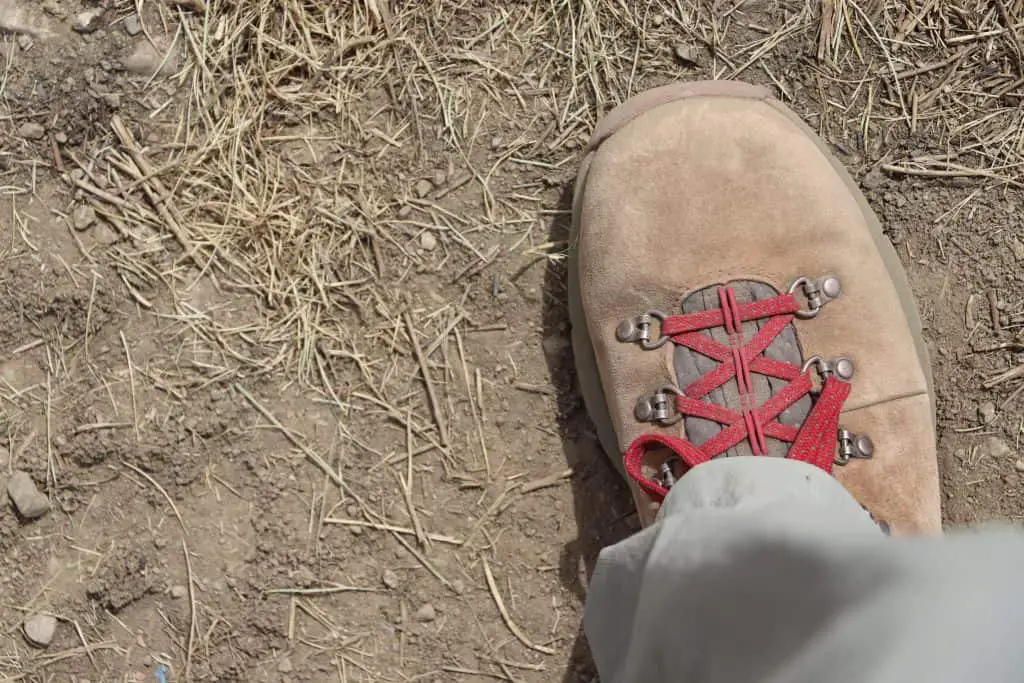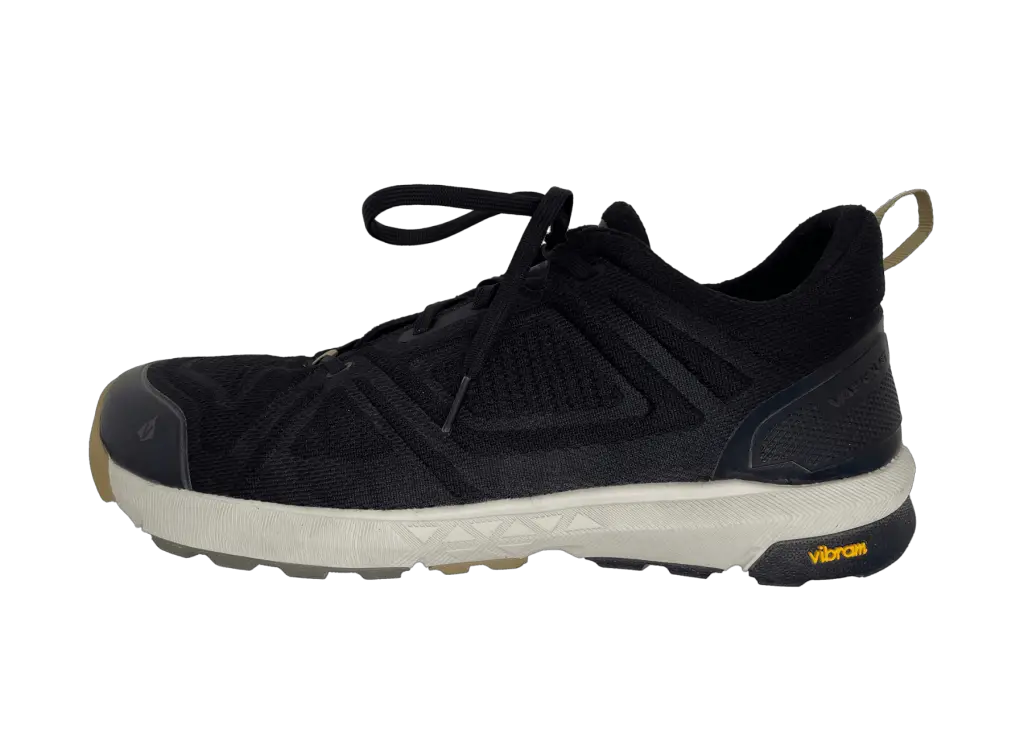How do you know if a pair of shoes will work for hiking? Of course, you could hike in them and find out, but this could lead to a miserable experience, blisters, or even an injury.
There are four critical factors to knowing whether any pair of shoes is good for hiking. They should be able to satisfy each of these factors: comfort, traction, lateral support, and protection. If the shoes you are considering don’t possess these characteristics, avoid hiking in them.
In this post, I will walk you through how to assess each of these four factors and help you decide whether that pair of regular shoes in your closet will work or not for your upcoming hike.

Shoes Should Fit Well and Be Comfortable For Hiking
This might be controversial for some avid hikers, but I put comfort above all other factors when ranking and scoring hiking footwear. I routinely purchase and test hiking shoes; if they are uncomfortable, I don’t use them after reviewing them.
Comfort trumps everything else because if the shoes you plan to hike in are uncomfortable, nothing else matters.
To know whether a pair of shoes might be comfortable for hiking, I suggest the following considerations, assuming you only have a few minutes to decide.
- While walking around, do you feel any impingement or tight spots? Hiking shoes should be loose enough to allow your feet to flex but snug enough to provide a direct connection between your foot and the hiking trail.
- While walking upstairs, does your heel slip? A few factors can cause heel slip, but typically, the shoes are too big for your foot. It may also be that the outsole is too rigid. In any case, if your heels slip, you will have less control over the trail, and you will probably develop blisters. To overcome this, try wearing thicker socks or adding a thicker insole if you have one.
- While walking downhill, do your toes touch the end of the shoe? To test this, you can stand on a stair facing toward the lower end with the front half of your shoes hanging out over the stair. Rock back and forth to see if your feet slide in the shoe, causing your toes to touch the end. If your toes do feel the end, evaluate whether they are slightly touching or whether your toes are crammed into the end of the shoe. Most trails will have gradients. Steep hills mean steep descents, and cramming your toes into the end of the shoe can be very painful and lead to blisters and problems with your toenails.
If you try these three simple tests and find no issues, the pair of shoes might work for hiking. Again, comfort trumps everything else because, without it, nothing else matters.
There are three other factors below that, if not satisfied, might make hiking in the shoes unpleasant and even irresponsible.
Shoes Should Provide Adequate Traction When Used For Hiking
Having adequate grip and traction is paramount to hiking safely and getting from point A to point B on the trail. Grip and traction are interrelated but not identical concepts. For more on this, I wrote an article explaining the difference.
You can perform a simple grip test to determine whether the shoes you have in mind for hiking might provide adequate traction.
- While wearing the shoes, find various surfaces to stand on, such as concrete, grass, dirt, kitchen floor tiles, etc.
- On the various surfaces, rise on the forefoot of your shoes and move your heels back and forth.
- How easily does the outsole of the shoe slip? Does it provide much friction?
Shoes with very little grip are dangerous for hiking. Pay particular attention to how well the outsole grips smooth surfaces like your kitchen floor. If it feels like the shoe slips easily, then I would avoid hiking in them.
Your biggest risk of injury while hiking is from slipping and falling. Hiking in shoes with insufficient grip and traction is dangerous.
The shoes that won the grip test in my recent hiking shoe testing are also very comfortable. I always use them for hiking because of how wonderful my feet feel while walking in them. If interested, you can support my blog and check their current pricing at this link.

Shoes Should Provide Lateral Support While Hiking
Regular shoes differ from hiking shoes in the type of midsole and lateral support they feature. Hiking shoes are designed to provide significant lateral support since hiking often involves walking on narrow and low paths.
Before you hike in a pair of regular shoes, you will want to see whether they will work on lateral inclines and other unusual gradients.
- While supporting yourself, stand on the edge of a stair with one shoe aligned so that the edge of the stair runs from your toe to the heel.
- Hold on to a railing and support yourself with your other foot.
- Put some pressure on the shoe perched along the edge of the stair and roll your shoe back and forth laterally, keeping the sole in contact with the centerline with the edge of the stair.
- Do you feel as if the shoe will easily slip? Does it seem as if your ankle would easily roll or if your foot would slip out of the shoe?
The important consideration is whether you can walk along the slope of a steep hill without slipping, rolling your ankle, or slipping out of the shoes. If the shoes you are considering for a hike do not provide modest lateral support, you should not hike in them.
I tested five hiking shoes and found a clear winner which provides amazing lateral support and stability. To find out which shoe that is, go check out my blog post.

Shoes Should Provide Protection For Your Feet While Hiking
The last criterion on this list is whether or not the shoes provide adequate protection. Protection is not as important if your shoes are comfortable, have a decent grip, and provide some lateral support.
Hiking shoes protect both the upper and lower part of your feet. In a recent article, I discuss how hiking shoes provide protection and why it is important.
For hikes along well-maintained trails, protection becomes less important. If, on the other hand, you plan to hike in an area with sharp gravel or thick brush, then protection is more critical.
Ideally, the shoes you plan to use for hiking should have a rubber sole with enough material between your foot and the ground to absorb the impact of rocks or other debris. The shoes should also protect the top of your feet from abrasion or impacts.
For more content on hiking from Dusty Hikers, check out our YouTube channel.

